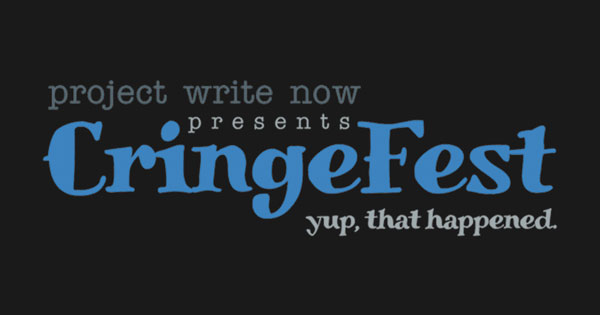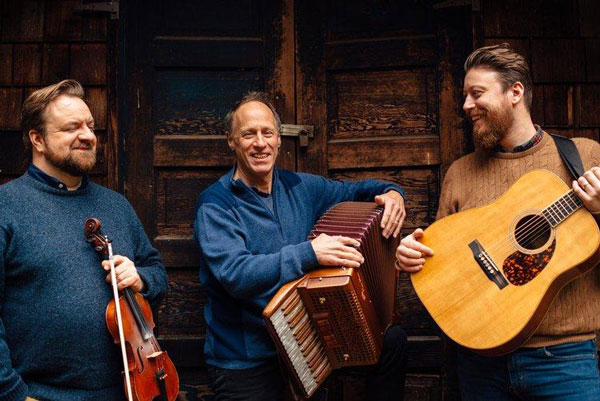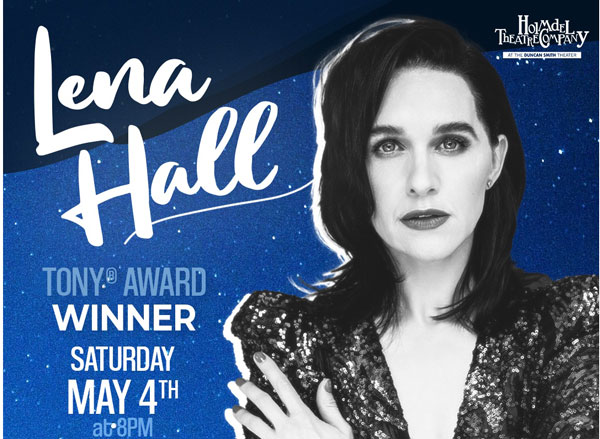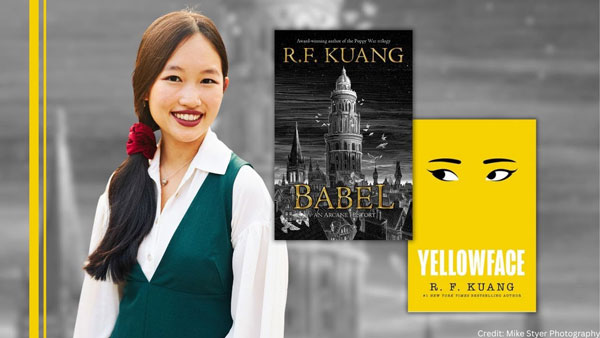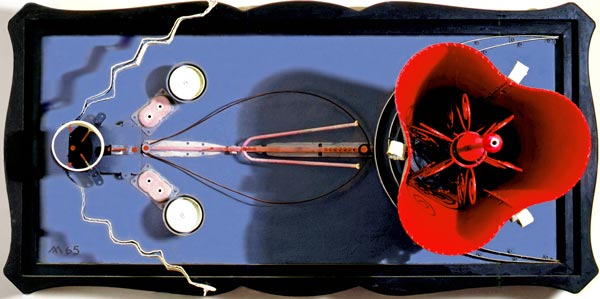
(NEW BRUNSWICK, NJ) -- With such rapid advances in digital tools, we sometimes find ourselves lamenting about artists who were ahead of their time, guessing what Leonardo could have done with a jet engine or Warhol, with Instagram. Regarding Soviet nonconformist artist Leonid Lamm (1928–2017), however, we do not have to wonder. With a career spanning 70 years, technology caught up to his artistic vision and he became one of the most surprising and versatile artists in the history of Soviet nonconformist and contemporary Russian-American art. Nevermore: Leonid Lamm, Selected Works, on view through September 30 at the Zimmerli Art Museum at Rutgers, examines his prolific career, which was stimulated by a lifelong inquiry into the multidimensional energy of space.
More than 60 works on view represent three key periods: his early decades in the Soviet Union, the period following his move to the United States in the 1980s, and his incorporation of digital formats in more recent years. Free, public events that spotlight the exhibition include an evening reception on March 9 and Art After Hours: First Tuesdays on June 5. Details are available at www.zimmerlimuseum.rutgers.edu.
“Leonid Lamm had a significant effect on the development of Soviet nonconformist art and in establishing its legacy both within and outside the Soviet Union,” observes Julia Tulovsky, Ph.D., Curator of Russian and Soviet Nonconformist Art, who organized the exhibition. “The multifaceted nature of Lamm’s formal education and range of artistic exposures gave him the necessary tools to embark on a complex exploration and interpretation of pictorial space and its relation to the viewer. He was able to interpret a variety of visual vocabularies with ease, from the Russian avant-garde and surrealist experiments, to conceptual installations and American consumerism in the late 20th century, and finally, our current digital era.”
Zimmerli director Thomas Sokolowski points out, “This is a wonderful opportunity to experience the broad scope of Lamm’s career. Most of the works are from our Dodge Collection, several of which were donated just this past fall.” Although the span of the Dodge Collection stops around 1986, when the Soviet Union was collapsing, Lamm continued working until 2017. Sokolowski adds, “We also are showing a piece from the Zimmerli’s Claude and Nina Gruen Collection of Contemporary Russian Art, which covers the 1990s and early 2000s. In addition, there are important loans from Innessa Levkova-Lamm and Olga Lamm, that artist’s wife and daughter, which represent his career into this century, all the way through last year.”
Leonid Lamm pursued a unique career path for an artist in the Soviet Union during the mid-20th century. He initially studied architecture at the Construction Institute of the Moscow City Council in the 1940s; spent time in the atelier of a socialist realist painter; and ultimately trained with prominent Soviet artists at the Moscow Polygraphic Institute, where he earned a degree in 1954. Lamm also had the rare opportunity to become familiar with the legacy of the Russian avant-garde that had flourished from the 1910s to the 1930s, but was strictly censored thereafter by Joseph Stalin and the Soviet government, which perceived the artists’ radical visions as threatening. Lamm had met a few key avant-garde figures still living in Moscow in the 1940s and they introduced him to the artistic concepts of Vladimir Tatlin and Kazimir Malevich (whose iconic 1915 painting Black Square Lamm revisited throughout his career), among others. After graduating, he embarked on a professional career as an art director at a publishing house and later, a book illustrator and designer. But like many of his contemporaries, he remained discreet about his own creative pursuits outside limitations imposed by the government.
Advertise with New Jersey Stage for $50-$100 per month, click here for info
The exhibition opens with Lamm’s earliest series of geometric abstractions from the mid-1950s, when he initiated what became a lifelong exploration of spatial relationships and the energy of space. These images demonstrate his ease with the visual vocabulary of the Russian avant-garde. For example, the geometric objects in the painting Beat the Flat Red Squares with Cylinders (Dynamics of Perspective), from 1955-56, and the 1955 watercolor Dynamic Diagonal Decline reference the two-dimensional elements common in his predecessors’ works. But he infused the shapes with volume, suggesting that the abstract structures could float beyond the surface of the paper and toward the audience.
In the 1960s, Lamm recognized a dissent in the struggle for freedom that coincided with the Soviets’ ambition to reach outer space; an energy that permeated the social atmosphere. Lamm also was one of the first Soviet nonconformist artists to experiment with letters and puns in his artwork, a practice later popularized by Sots artists in the 1970s. Such paintings as DADADADA(Yes/Hell) and MAT’MAT’MAT”… (Mother/Darkness), from 1964 and 1965, respectively, combine his examination of pictorial space with his reflections on contemporary philosophical and sociopolitical impulses. MAT’MAT’MAT”…, in particular, assumes multiple interrelated functions: it takes an open and ironic stance toward the avant-garde; creates a strong spatial illusion that invites the viewer to peer into its depth; and in manipulating the appearance of the word MAT’, or “mother,” encourages the viewer to contemplate the origin of art, the universe, life itself. Lamm’s study of the visual and conceptual possibilities of pulsating spaces further progressed when he began to make assemblages. His 1965 mixed media work Venus advanced from a mere illusion of space and volume on a flat surface to a three-dimensional form, imposing itself into the space of viewers.
Lamm first applied for an exit visa in November of 1973, which led to his unexpected arrest and a three-year prison sentence. [His installation The Birth of an Image (1976–96), on view in the museum’s Upper Dodge Gallery, reflects on this experience.] Finally, in 1982, Lamm immigrated with his wife and daughter to New York City, where he truly felt at home. His work merged his unique background with a newfound immersion in American culture, challenging the romanticized vision projected by political and artistic symbolism. Lamm continued to reference the works of his Russian avant-garde predecessors and symbols of Soviet ideology, intertwining them with American consumerism and visual culture. With Pyramid (1986–88), he implements Malevich’s square on several of its nine panels to explore the shape’s potential and limits; filling each individual painting with ironic references to Soviet ideology and symbols of American consumerism. The 1994 collage Welcome to Capitalism incorporates a hammer and sickle – one of the most recognizable Communist symbols – into an American dollar sign. Though created nearly a quarter century ago, the image’s implications remain relevant today.
Lamm’s preoccupation with the energy of space that had permeated his artistic output for several decades came full circle at the end of his career, when his expansion of representational techniques coincided with new developments in the realm of digital technology. He not only revisited broad themes from his past, but also revised several of his own works. The 2003Reincarnations series explores how the shapes in his drawings Motion of Similar Curves in Space (1954) and Reflection (1957) had to be updated to match the new energy of the 21st century. His interest lay in how these images, when depicted on a screen, relate to the visual artifact but merge with semantic meaning in the artificial space of virtual reality. In addition, three videos from 2006 on which he collaborated with his wife, Innessa Levkova-Lamm, and a digital project on which he collaborated with his daughter Olga Lamm from 2015 to 2017, are on view.
Nevermore: Leonid Lamm, Selected Works, on view March 3 through September 30, 2018, is organized by Julia Tulovsky, Ph.D., Curator of Russian and Soviet Nonconformist Art, assisted by Christina Lamb Chakalova, a Dodge-Lawrence Fellow at the Zimmerli and Ph.D student in the Department of Art History at Rutgers. The exhibition and booklet are made possible by the Avenir Foundation Endowment Fund and the Dodge Charitable Trust— Nancy Ruyle Dodge, Trustee.
The Norton and Nancy Dodge Collection of Nonconformist Art from the Soviet Union at the Zimmerli Art Museum at Rutgers is the largest and most comprehensive collection of unofficial Soviet art in the world. The collection includes over 20,000 works by more than 1,000 artists from Russia and the Soviet Republics, created from about 1956 to 1986. The collection was assembled by American economist Norton Dodge during his many business trips to the Soviet Union in the 1960s through the early 1970s, and through relationships with artists who later moved to the United States. The Zimmerli provides opportunities to study and exhibit these artworks, which otherwise might have been lost to time and circumstance, as well as position the Dodge Collection in the global dialogue about art, especially its relevance in the development of conceptual art in the 1970s and 1980s.
The Claude and Nina Gruen Collection of Contemporary Russian Art resulted from a generous gift in 2005. The collection comprises approximately 180 works by leading Russian contemporary artists, some of whom were Soviet artists now living in the diaspora. The core works by the nonconformist artists, produced after the collapse of the Soviet Union in 1991, continue to dwell upon Soviet experiences while uniting them with the realities of the new post-Soviet economy. It displays a broad spectrum of art paradigms, but with a consistency that emphasizes the interchangeability of various concepts within Russian contemporary art. This invaluable addition to the Zimmerli’s holdings of traditional Russian art donated by George Riabov and the Dodge Collection extends the span of Russian art to the present day, creating a solid base at the museum for further research and exploration.


